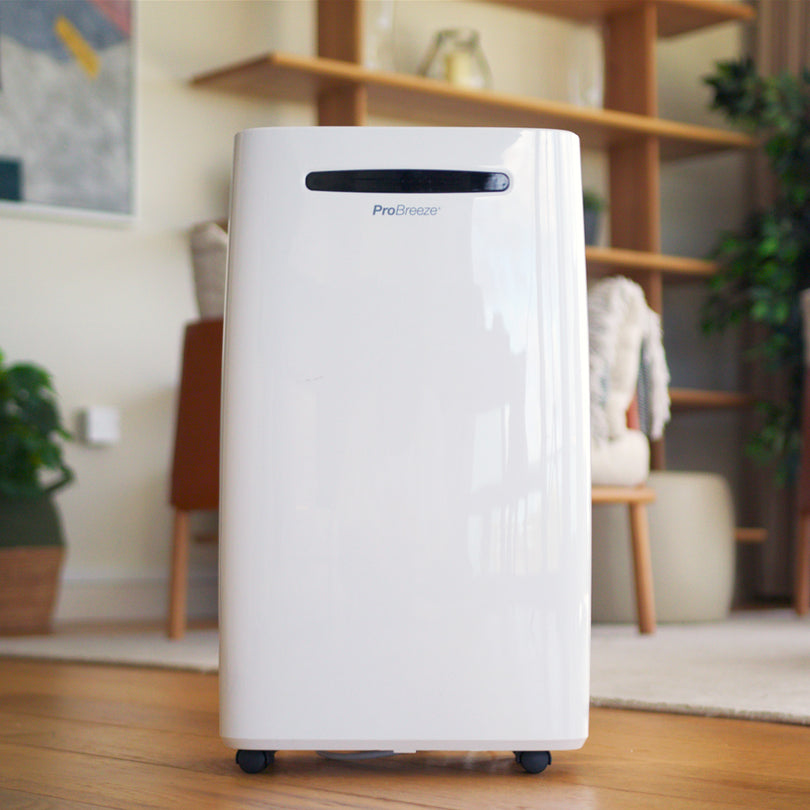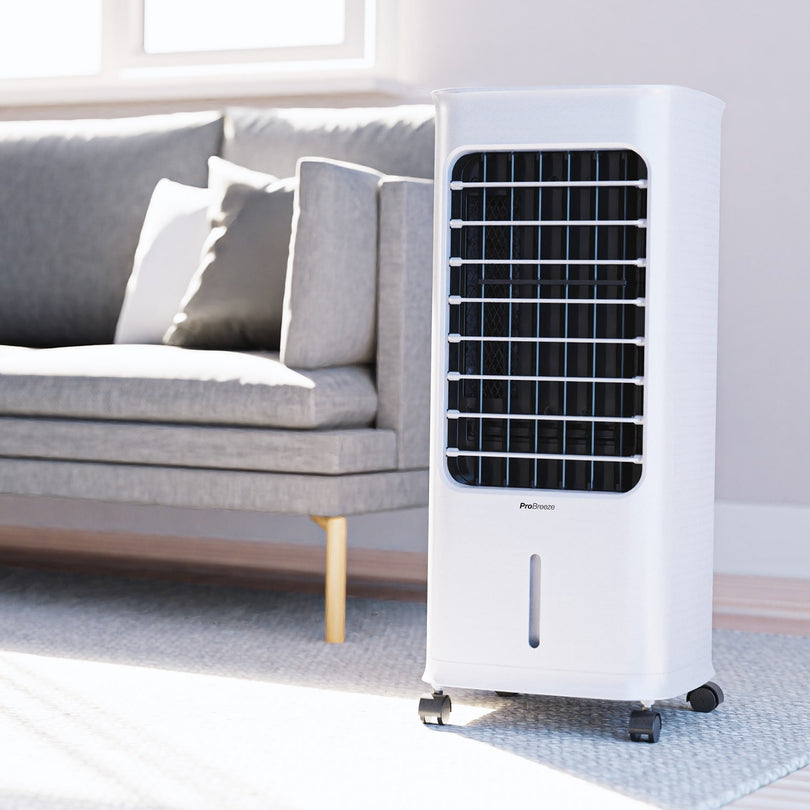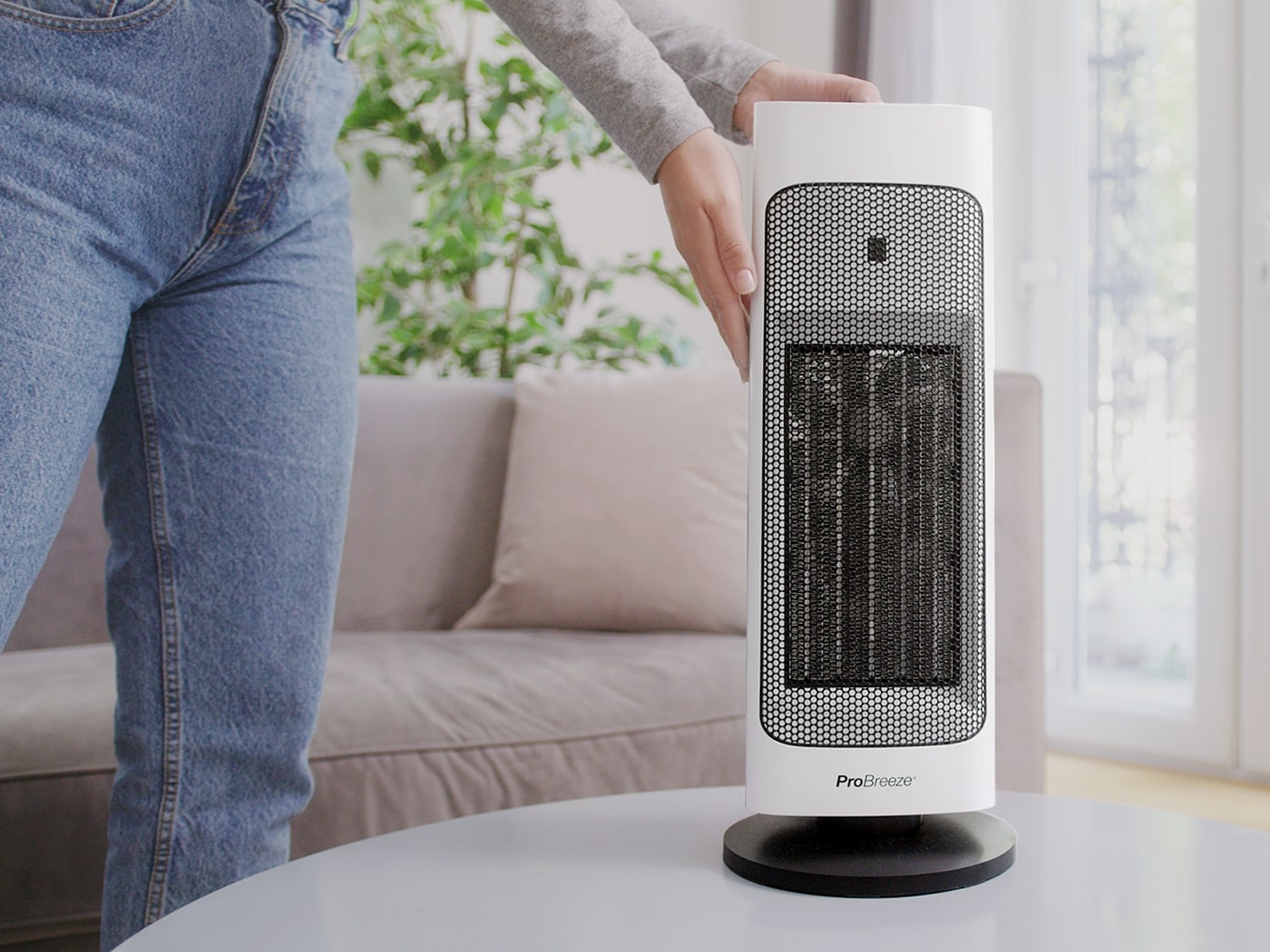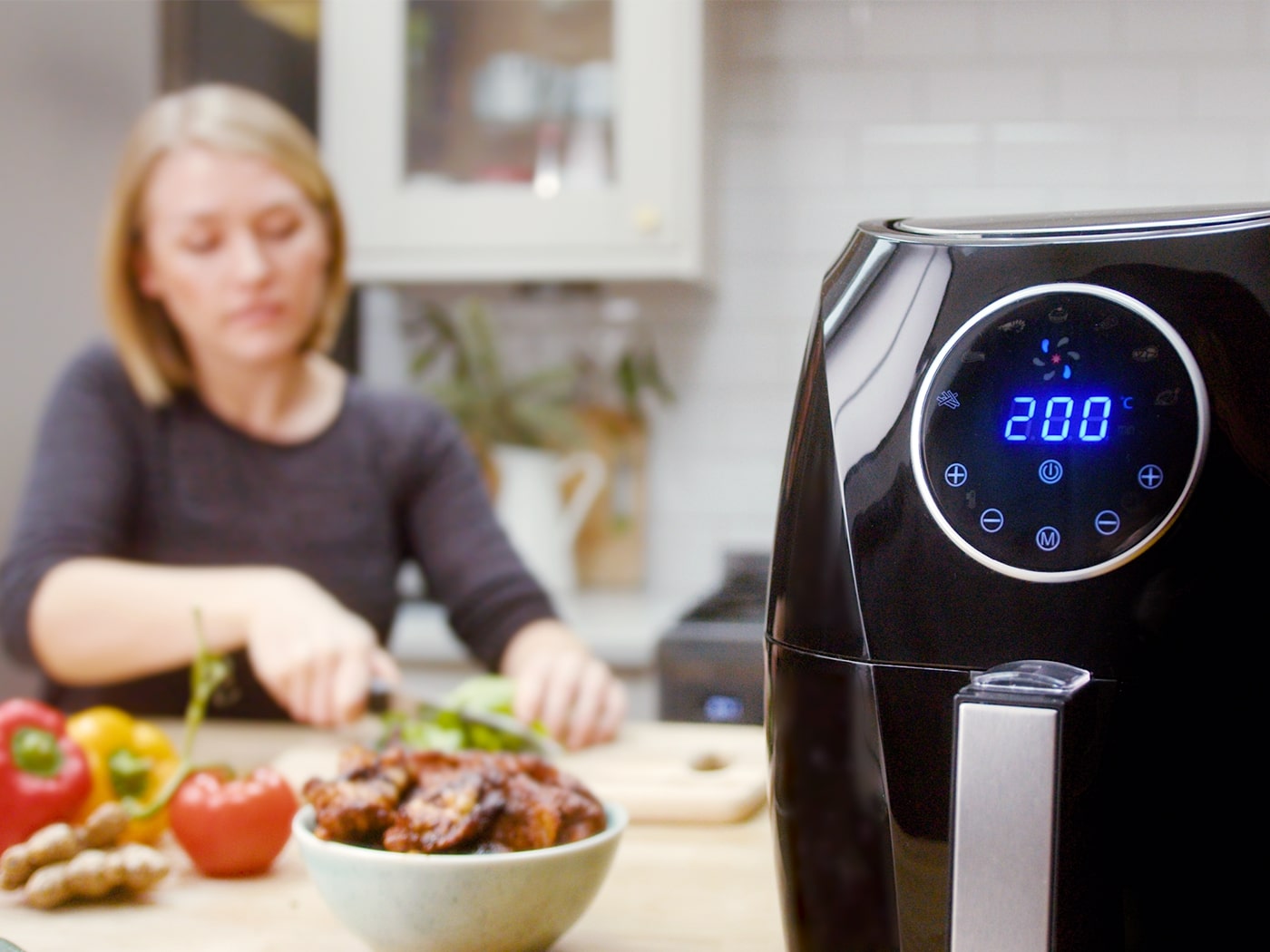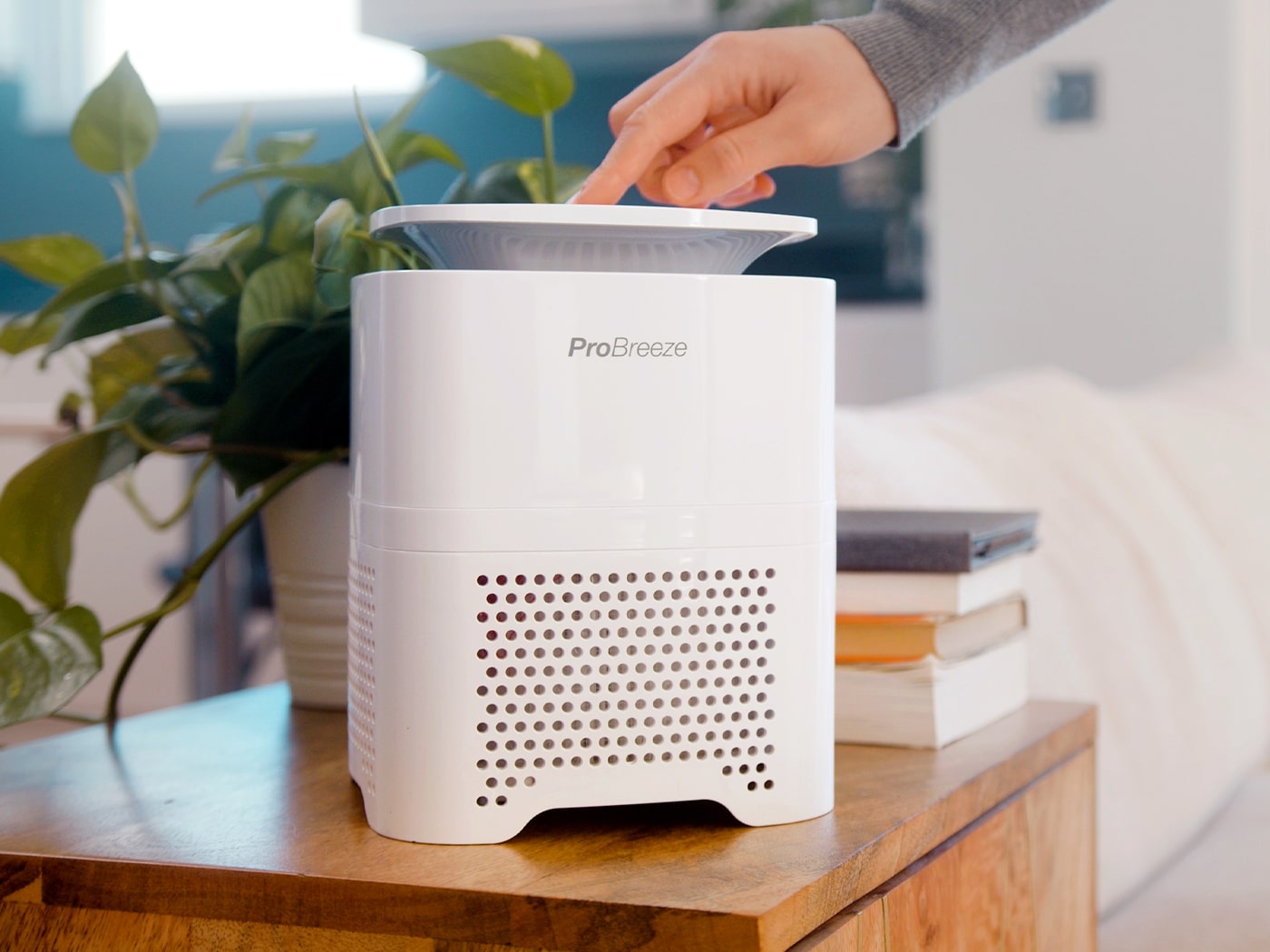Unless you are an expert on the topic, buying an air purifier can be a daunting task. Where should you even begin? Our team here at Pro Breeze has compiled a brief guide designed to help you buy an air purifier.
1. What are air purifiers?
The first thing you need to know is exactly what an air purifier is, and how it can help you. An air purifier (also sometimes known as an “air cleaner”) is a small device that can remove the contaminants and pollutants from the air in a room or entire house. They can be smaller, stand-alone devices, or larger systems that work in conjunction with an HVAC system.
What kind of air pollutants can they remove?
- Dust
- Tobacco smoke
- Allergens and pollen
- Mould (including black mould)
- Environmental pollution
2. Why do you need an air purifier?
Well, you need to ask yourself, “Do I care about the quality of the air that my family and I breathe while we live, work, play and sleep?” You will likely find that the answer is yes – and if so, you should consider an air purifier. They can help people with compromised immune systems, asthma, allergies and other sensitivities.
The most common reasons for getting an air purifier are to:
- Help with allergies by reducing allergy triggers like pollen, dust, etc
- Prevent dust from building up and reducing housework
- Help prevent mould and mildew in your home
- Remove odours from your home
- Reduce pet dander in the air
- Remove smoke and other gases from the air
3. What are the different types of air purifiers?
There are many different types of air purifiers out on the market, all for different purposes. Below we explain the difference between the main filters and what they remove from the air:
- Fine/Pre-Filter -Fine or pre-filters capture large airborne particles including dust and pet dander, which helps to extend the life of the HEPA filter. The condition of the fine or pre-filter should be checked on a regular basis and may require dusting or vacuum cleaning.
- HEPA Filtration – HEPA filters are made of layers of randomly placed fibres that range in diameter from between 0.5 and 2.0 micrometers. These fibres work together to trap up to 99.97% of particles depending on the HEPA filter class.
- Carbon Filtration - Carbon is an ideal material to use if you need to get rid of nasty smells, vapours and gases from your home. The carbon is derived from charcoal and is able to absorb these odours and gases into its tiny pores.
- Ionic Filtration - Ionic filtration (negative ion) is a complex scientific process that works by sending out electrically charged ions into your home’s air. These ions then bond with any potentially harmful impurities. The particles, now too heavy to float, fall to the ground to be vacuumed up, or are attracted to the collection plate on the unit.
- Cold Catalyst Filter - Cold catalyst filters absorb and decompose formaldehyde in the air and tiny floating dust particles. They also help in the removal of other harmful gases such as Benzene, ammonia and TVOC.
If you have a specific purpose for buying an air purifier, please see our useful guide below:
- Asthma: HEPA Filter with Activated Carbon
- Pet Allergies & Hay Fever: HEPA Filter
- Mould & Bacteria: HEPA Filter or UV Light (optional)
- Smoke: HEPA Filter with Activated Carbon
- Odours: HEPA Filter with Activated Carbon
- Households with Children: HEPA Filter, Cold Catalyst Filter, Activated Carbon, UV Light (optional)
4. How do you choose the right size air purifier?
When you are selecting the perfect air purifier for your home, you need to think about how many rooms you want to purify and the size of these rooms. You need to measure the size of the room by determining the square footage. At this point, you need to start assessing the different air purifiers on the market, and the square footage that they are designed to handle.
If you are purchasing an air purifier because you or someone in your family has allergies or asthma, you also need to think about its air changes per hour (ACH) rating. An ACH rating of at least 4x is recommended for those with breathing issues.
Then, simply match this up with the size of your room, and you can easily choose the right model for your needs.
But what are CADR and ACH ratings?
When you are shopping for a new air purifier, you will likely notice two main ratings that come into play: ACH and CADR.
- CADR stands for “Clean Air Delivery Rate.” It is a rating that was created by the Association of Home Appliance Manufacturers (AHAM) and is designed to indicate effectiveness of an air purifier. The higher the CADR number, the better the air purifier is at cleaning the air in the room.
- ACH is an acronym for “Air Changes per Hour.” This rating tells you how many times in one hour that the purifier exchanges all of the air in the room. An ACH rating of 4x simply means that the total volume of the air in the room will be exchanged four times per hour.
5. What types of additional features are available?
In addition to choosing what type of air purifier is best for your home, its size, and its rating, you also need to determine which of the following additional features you would like to add.
- A Filter Change Indicator – If you are using an air purifier that uses any kind of physical filter, it will need to be changed or cleaned regularly in order to work at its highest potential. Rather than taking a random guess, a filter change indicator will let you know exactly when it is time to make the change.
- Fan Speed – Fan speeds control the air purifier itself, allowing you to fine-tune exactly how it works to best suit various conditions.
- A Pre-filter – Pre-filters will grab the biggest particles from the air before they head into the main filter, prolonging its life. This allows the main filter to work better in order to capture the pollen, dust and pet dander you need it to eradicate.
- Ultra Violet Light - Ultra Violet Light (or UV) is part of the electromagnetic spectrum and when used in air purifiers can be an effective way to clean the air. When the air in your home passes into the purifiers, it is exposed to UV light (this light is not exposed into the room itself). The UV disrupts the DNA of the pathogens and this prevents them from making you and your family ill.
- Energy Star Label – This label can help you to find household electronics that operate using less electricity. This means more energy efficiency and lower costs for you.
- Air Quality Sensors – Lower end models do not monitor the air quality to determine how and when they should operate, but higher-end models tend to include air quality sensors. By constantly monitoring the environment for particles and harmful toxins, the fan speed can always stay at the right setting. For example, if it detects a high level of particles, it will speed up, and then revert back to normal when the issue has been taken care of.
- Remote Control – If you don’t want to have to get up every time you want to adjust your purifier, consider a model with a remote control so that you can control it from the comfort of your sofa.
- Portability – If you want to be able to move your purifier around to different areas in your home, you will want a portable air purifier. Some even come with wheels and handles for ultimate portability.
6. Additional points to consider
- Maintenance Costs – You will want to think about the quality of the unit you are buying in order to save on maintenance costs in the future.
- Noise Level – Some air purifiers are noisy and could keep you and your family awake at night. Make sure you choose a unit that is as quiet as possible.
- Energy Consumption – Newer models are always making leaps and bounds in energy efficiency. Choose an air purifier that uses the smallest amount of energy as possible in order to save money and help the environment.
- Manufacturer Reputation – A great deal on a brand you’ve never heard of? It’s likely too good to be true. In order to truly get a good deal, do your research and go with a brand that has a great reputation.
- Warranty – As with any electronics or home appliance purchase, you should ensure that your air purifier comes with a solid warranty.
FAQs
Q: What are the three main kinds of air filters?
A: The three main kinds of air filters are HEPA, Ionic (Negative Ion), and Charcoal. See above for more information about each one of these options.
Q: What size air purifier do I need for my room?
A: There are thousands of different air purifiers on the market, all designed to fit different rooms and spaces. Make sure you carefully measure the size of your room and consider the CADR (Clean Air Delivery Rate) and ACH rating (Air Changes Per Hour).
Q: Why do I need an air purifier?
A: Let’s face it – most of our homes have some kind of pollutant in our air. This could be from pet hair, pollen, dust from remodelling, nearby pesticide spraying, mould and mildew, household cleaners, solvents, new products ‘off-gassing’ – the list is endless. Purifying the air of these toxins is always a good idea.
Q: Where should my air purifier be installed in my home?
A: Air purifiers are usually designed to be used in one room, so you will likely want to have it installed in the area in which you spend the most time. For most of us, this is the bedroom, although many people choose to have additional air purifiers installed in their lounge, living room and children’s play areas.
Q: What kind of air purifier is best to get rid of pet dander?
A: We all love our pets, but we usually don’t love their hair, dander and associated smells. In addition to being an inconvenience, hair and dander can be a real problem for those with sensitive or weakened immune systems. Having a pet can be an unrealistic dream for people with allergies unless they install an air cleaning purifier with a HEPA and pre-filter. This will often reduce a lot of the symptoms.
Q: Do air filters need a lot of maintenance?
A: The amount of maintenance your air purifier will need will vary, depending on the model and the brand. While some models have permanent filters, most air purifiers come equipped with removable filters that should be changed every six to eight months. To extend the life and effectiveness of your filter, you can also run a vacuum cleaner over it every few weeks. Choosing a model with a "change-filter" indicator is always a good idea, as this will alert you to when to change the filter.
Q: Are all air purifiers noisy?
A: Air purifiers have a reputation for being loud and obnoxious, but this does not need to be the case. Its decibel level will depend on the model and the fan operating speed. Some brands are known to be much quieter than others, so it pays to do some research if noise level matters to you.
Q: How often should I run my air purifier, and for how long?
A: In order to achieve the best results, it is a good idea to run your air purifier continuously. That said, in order to lower your electricity costs and minimise the noise, you can always switch it onto the lowest setting whenever you are home.
